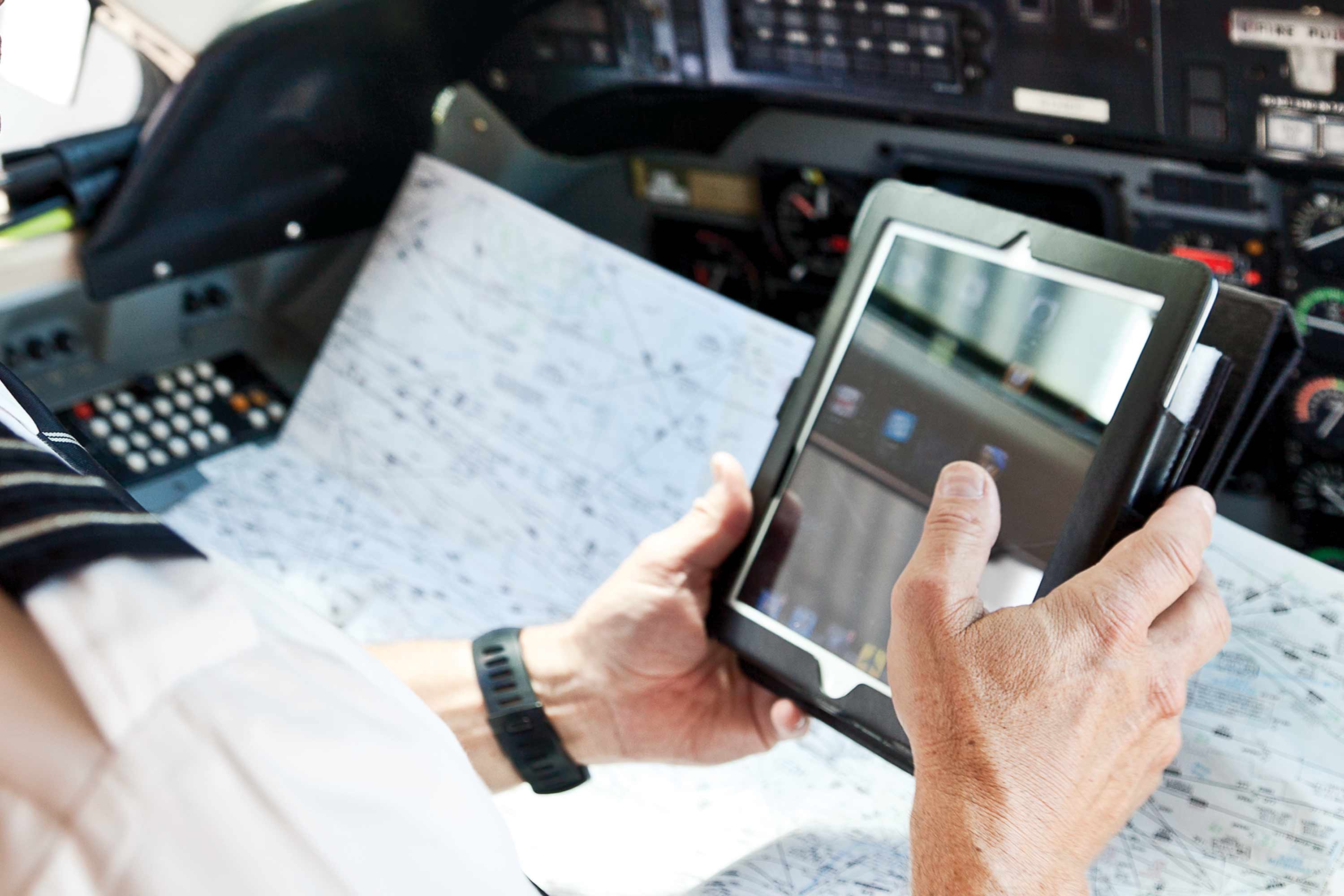
Dec. 23, 2015
There’s no doubt that mobile technology saves money and time, but a successful transition to a paperless flight operation hinges on smart planning and researching what will meet your needs, according to experts who took part in a recent NBAA webinar, sponsored by Jeppesen.
Terry Lascher, director of operations at L.J. Aviation in Latrobe, PA, who managed his company’s move to mobile devices, suggested outlining what tasks the devices need to accomplish – such as providing charts, approach plates and storing operational or company information – and going from there.
“Check the 8900 guidance used by the FAA’s aviation safety inspectors,” Lascher recommended. That guidance contains a checklist operators must satisfy to receive FAA approval for electronic flight bags. Lascher also suggested writing company technology guidance without a lot of specifics because software changes regularly, making company manuals outdated if they’re immersed in minutia.
The best mobility-management plans consider long-term use, added Lascher. Those guiding documents determine if the devices will hold personal and business information or just business information. The plans should allow ample time for deployment and testing and consider uses outside the cockpit, such as for maintenance and scheduling.
Lascher’s company, for example, chose company ownership of their mobile technology – as opposed to individuals using their own personal devices – to ensure standardization.
Mobility management plans also should establish who will administer the devices, and name an assistant so the staffer isn’t overwhelmed and employees can get help when needed. Deployment can be more manageable if divided into groups. Maintenance technicians or pilots could test the devices before they go company wide, suggested T.J. Wirth, a Jeppesen business manager who assists customers with digital transformation.
Security also should be a consideration. L.J. Aviation uses Secure Content Locker software, which enables Lasher, as administrator, control access. Manuals are read-only, and applications can be controlled and information restricted. For instance, video of the company’s monthly pilot meeting, where customer concerns and proprietary company information are discussed, can be limited to viewing only and cannot be shared.
Security also extends to tracking, locking and wiping devices remotely should one be lost or stolen.
Finally, experts suggest that companies establish company policies on using mobile technology and provide training. Don’t assume employees know how to operate the devices or even how to turn them on and off, said Lascher.


 International Business Aviation Council Ltd.
International Business Aviation Council Ltd.